Your cart is currently empty!
Blog
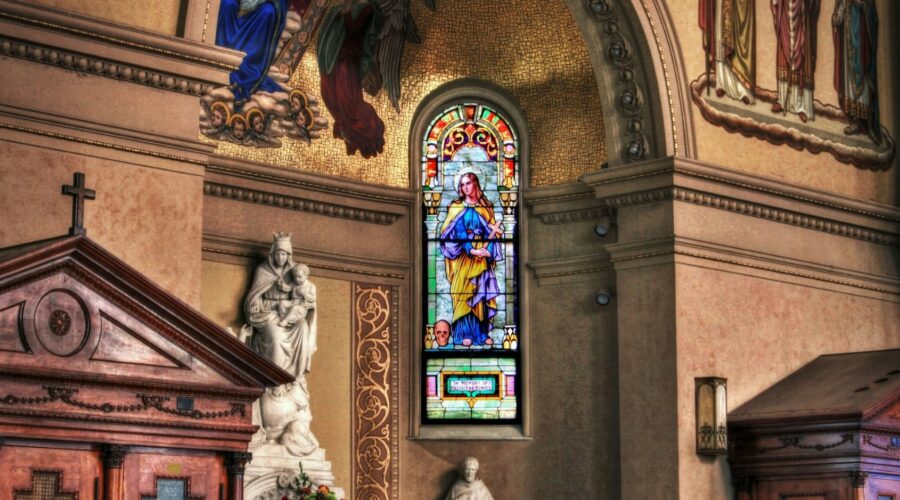
Discover the Enchanting World of Grotto Churches: A Journey into History and Spirituality
Step into a realm where nature and faith intertwine seamlessly—the captivating world of grotto churches. These subterranean sanctuaries, carved into caves and rock formations, have played a significant role in human history, offering refuge, inspiration, and a profound connection to the divine.
A Timeless History: The Origins of Grotto Churches
The earliest known grotto churches date back to the early days of Christianity, when persecuted believers sought solace and safety in secluded caves. Over time, these humble beginnings evolved into elaborate and awe-inspiring architectural masterpieces, adorned with intricate frescoes and sculptures.
From the catacombs of Rome to the cave monasteries of Cappadocia, grotto churches have witnessed the rise and fall of empires, the spread of religions, and the enduring power of human faith.
Features and Architecture: A Subterranean Symphony
Grotto churches typically share certain architectural features that set them apart from their above-ground counterparts:
- Cave-like interiors: Grotto churches are often carved directly into rock or located within caves, offering a unique and atmospheric setting.
- Natural lighting: Many grotto churches feature natural light sources, such as skylights or openings in the rock, which create a mystical and ethereal ambiance.
- Acoustic properties: The enclosed nature of grotto churches often results in exceptional acoustics, making them ideal for singing, chanting, and other religious ceremonies.
- Wall paintings and sculptures: Grotto churches are often adorned with vibrant frescoes, mosaics, and sculptures, depicting religious scenes and figures.
Notable Grotto Churches: Exploring the World’s Hidden Gems
The world is home to a diverse array of grotto churches, each with its own unique story and architectural splendor.
Cappadocia, Turkey: A Maze of Underground Monasteries
The Cappadocia region in Turkey boasts over 200 grotto churches and monasteries, many dating back to the 10th century. These subterranean complexes, carved into soft volcanic rock, feature intricate cave networks, hidden chapels, and stunning frescoes.
Sassi di Matera, Italy: A Living Grotto City
The ancient city of Matera in Southern Italy is known for its Sassi, a unique network of grotto dwellings and churches. These iconic structures have been continuously inhabited for over 9,000 years, creating a living testament to the enduring power of grotto architecture.
Kiev Pechersk Lavra, Ukraine: A Sacred Underground Labyrinth
Nestled beneath the hills of Kyiv, the Kiev Pechersk Lavra is a sprawling cave monastery complex that has been a spiritual center for over 1,000 years. Its labyrinthine network of caves and chapels is adorned with magnificent frescoes and contains the relics of numerous saints.
Spiritual Significance: A Sanctuary for the Soul
Beyond their architectural splendor, grotto churches hold immense spiritual significance:
- Refuge and sanctuary: Grotto churches have historically provided a place of safety and refuge for persecuted religious communities.
- Contemplation and solitude: The secluded and often dimly lit interiors of grotto churches offer an ideal environment for meditation, reflection, and spiritual growth.
- Connection to the earth: Built into the heart of nature, grotto churches foster a deep sense of connection to the earth and its rhythms.
Tourism and Pilgrimage: Experiencing the Grotto’s Allure
Today, grotto churches are not only revered as sacred sites but have also become popular tourist destinations for their historical, architectural, and spiritual significance.
Many grotto churches offer guided tours and pilgrimage opportunities, allowing visitors to delve into their rich history and experience their numinous atmosphere firsthand.
Tips for Visiting Grotto Churches
If you plan to visit a grotto church, here are some helpful tips:
- Be respectful: Remember that grotto churches are often places of worship, so be respectful of the religious practices and atmosphere.
- Dress appropriately: Consider wearing comfortable, modest clothing that covers your shoulders and knees.
- Bring a flashlight: Some grotto churches may have limited natural light, so a flashlight can be useful for navigating the interiors.
- Take your time: Grotto churches are complex and immersive spaces. Allow yourself plenty of time to explore and soak in the atmosphere.
As you venture into the depths of a grotto church, you will embark on a journey through time, faith, and the human spirit. These subterranean sanctuaries offer a glimpse into the enduring power of belief, the beauty of nature, and the transformative experience of encountering the sacred in the most unexpected of places.
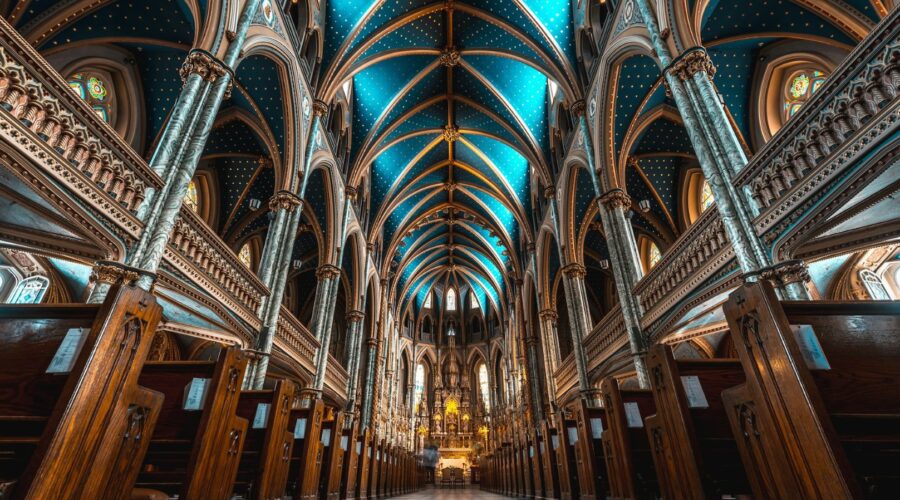
Gregory of Nyssa: A Comprehensive Guide to His Life, Philosophy, and Legacy
Introduction
Gregory of Nyssa (c. 335-395 AD) was a prominent theologian, bishop, and writer in the early Christian Church. He is considered one of the Cappadocian Fathers, along with his elder brother, Basil the Great, and friend, Gregory Nazianzen. Gregory of Nyssa’s writings and ideas have significantly influenced Christian thought and theology.
Early Life and Education
Gregory was born in Caesarea Mazaca (modern-day Kayseri, Turkey) around 335 AD. His father, a rhetorician, provided him with an early education in classical literature, philosophy, and rhetoric. Gregory pursued advanced studies in Athens and Alexandria, further honing his intellectual abilities.
Conversion to Christianity
Gregory’s early religious leanings were towards Gnosticism, but he later converted to Christianity under the influence of his brother, Basil. He was baptized around 361 AD and embarked on a monastic life, living an ascetic lifestyle devoted to prayer and contemplation.
Episcopal Career
In 372 AD, Gregory was ordained as the bishop of Nyssa, a small town in what is now Turkey. He faced various challenges during his episcopacy, including the Arian controversy and opposition from certain factions within the church. Gregory remained steadfast in his defense of orthodox Christian beliefs and played a significant role in combating heresy.
Theological Contributions
Gregory of Nyssa is renowned for his theological writings and ideas. Here are some key aspects of his theological system:
- Trinitarian Theology
Gregory played a pivotal role in developing the doctrine of the Trinity. He emphasized the distinctness of the three persons of the Godhead (Father, Son, and Holy Spirit) while maintaining their unity in essence.
- Christology
Gregory’s Christology centered on the idea that Christ is the mediator between God and humanity. He emphasized Christ’s divinity and humanity, arguing that both are essential for salvation.
- Anthropology
Gregory believed that humans are created in the image and likeness of God. He viewed the human body as a temple of the Holy Spirit and emphasized the importance of practicing virtue and living a Christ-like life.
- Eschatology
Gregory taught that the ultimate destiny of humankind is union with God in the resurrection. He believed in a universal resurrection, where all humans will be judged according to their deeds and ultimately enjoy eternal life or face eternal punishment.
Literary Works
Gregory of Nyssa was a prolific writer, and his works have been widely studied by scholars and theologians. Some of his most notable literary works include:
- “Life of Moses”
An allegorical treatise that interprets the life of Moses as a journey towards union with God.
- “Exegetical Treatise on the Song of Songs”
A mystical interpretation of the Song of Songs, seen as a representation of the soul’s union with Christ.
- “Against Eunomius”
A refutation of the Arian heresy, defending the orthodox doctrine of the Trinity.
- “On the Soul and the Resurrection”
A philosophical and theological treatise exploring the nature of the soul and the resurrection of the body.
Legacy and Influence
Gregory of Nyssa’s theological contributions and spiritual writings have profoundly influenced Christian thought and practice. He is recognized as a saint in both the Eastern Orthodox and Roman Catholic Churches. His works continue to be studied and valued by scholars and religious leaders, shaping Christian theology and spirituality for centuries.
Conclusion
Gregory of Nyssa was an influential figure in the early Christian Church, whose theological writings and ideas have left a lasting mark on Christian thought and practice. His contributions to Trinitarian theology, Christology, and eschatology have shaped the understanding of these doctrines in the Christian tradition. Gregory’s spiritual insights and mystical writings continue to inspire and guide believers today.
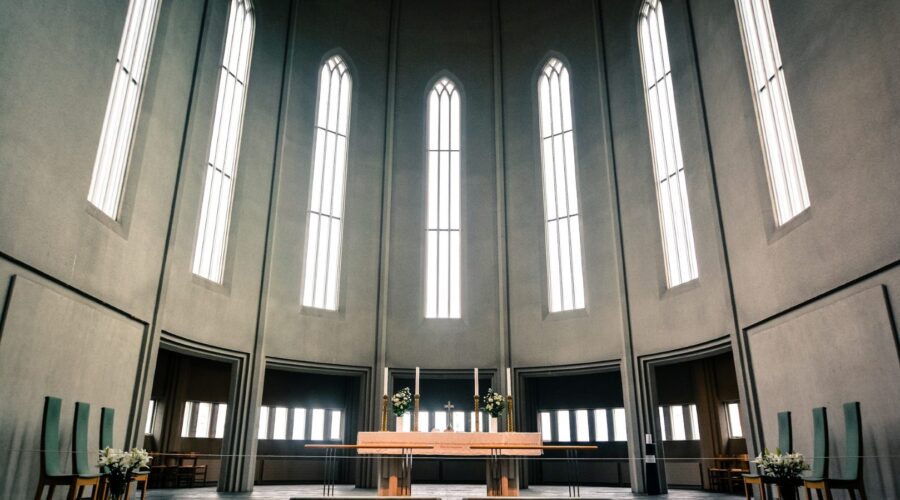
Unveiling the Essence of Greek Orthodox Christmas: A Sacred Celebration of Faith and Tradition
A History Steeped in Tradition: The Origins of Greek Orthodox Christmas
The Greek Orthodox Christmas, also known as “Xmas” or “Christougenna,” holds deep significance in the Eastern Orthodox Christian tradition. Its roots can be traced back to the early centuries of Christianity, with the first recorded celebration dating back to the 4th century AD. Since then, Greek Orthodox Christians have celebrated this joyous occasion with unwavering devotion and cultural flair.
The Significance of December 25: A Date of Divine Birth and Renewal
In contrast to the Western Christian tradition, which celebrates Christmas on December 25th, Greek Orthodox Christians observe the holiday on January 7th. This distinctive date stems from the Julian calendar, which the Eastern Orthodox Church continues to adhere to. Despite the difference in timing, the significance of December 25th holds true for both traditions, marking the miraculous birth of Jesus Christ.
Preparations and Festivities: A Season of Joy and Anticipation
Fasting and Spiritual Preparation
The period leading up to Greek Orthodox Christmas, known as the Nativity Fast, is characterized by spiritual preparation and fasting. Believers abstain from meat, dairy products, and fish for 40 days, mirroring the fast undertaken by Jesus before his baptism. This period of introspection and self-purification helps create an atmosphere of reverence and anticipation for the coming festivities.
Vigorous Celebrations and Traditional Delicacies
On Christmas Eve, families gather for a festive meal known as “Agrypnia,” which translates to “absence of sleep.” This joyous celebration involves attending an evening church service followed by a feast featuring traditional foods such as “Christopsomo” (Christ’s bread), “kourabiedes” (sugar cookies), and “melomakarona” (honey cookies).
Christmas Day Traditions: A Symphony of Joyous Customs and Symbolism
Church Service and Holy Communion
The heart of Greek Orthodox Christmas is the Divine Liturgy, a solemn and uplifting church service held on Christmas morning. The service is filled with hymns, prayers, and the sharing of Holy Communion, representing the unity and love that Christ brought into the world.
Blessing of the Waters and Family Gatherings
A unique tradition on Epiphany Day, which follows Christmas, is the “Blessing of the Waters.” Priests bless rivers, lakes, and seas, symbolizing the baptism of Jesus in the River Jordan. Families and friends partake in this ritual, believing it brings good fortune and protection for the coming year.
Music and Customs: A Cultural Tapestry of Melodies and Traditions
Traditional Carols and Hymns
Greek Orthodox Christmas is renowned for its enchanting carols and hymns. “Kalanta” are traditional songs sung by children and adults alike, spreading the message of Christ’s birth throughout neighborhoods. The renowned Byzantine chant, with its captivating melodies and deep spiritual significance, adds to the festive atmosphere.
Decorations and Festive Ambiance
Houses and churches are adorned with festive decorations, including twinkling lights, colorful ornaments, and garlands. The “Nativity Scene” or “Bethlehem,” depicting the birth of Jesus, occupies a central place in homes, offering a poignant reminder of the holiday’s spiritual essence.
Regional Variations: A Kaleidoscope of Cultural Expressions
Greek Orthodox Christmas traditions vary slightly across different regions, reflecting the rich cultural diversity within the Eastern Orthodox world. In some areas, children go door-to-door singing carols and receiving small gifts, while others participate in lively dance performances and theatrical plays.
Conclusion: A Timeless Celebration of Faith and Heritage
Greek Orthodox Christmas is a vivid tapestry of faith, tradition, and cultural practices. It is a time for spiritual reflection, family gatherings, and the joyous celebration of the birth of Jesus Christ. From the solemn church services to the festive feasts and vibrant customs, this holiday holds profound significance for Greek Orthodox Christians worldwide. May its timeless traditions continue to inspire and enrich generations to come.
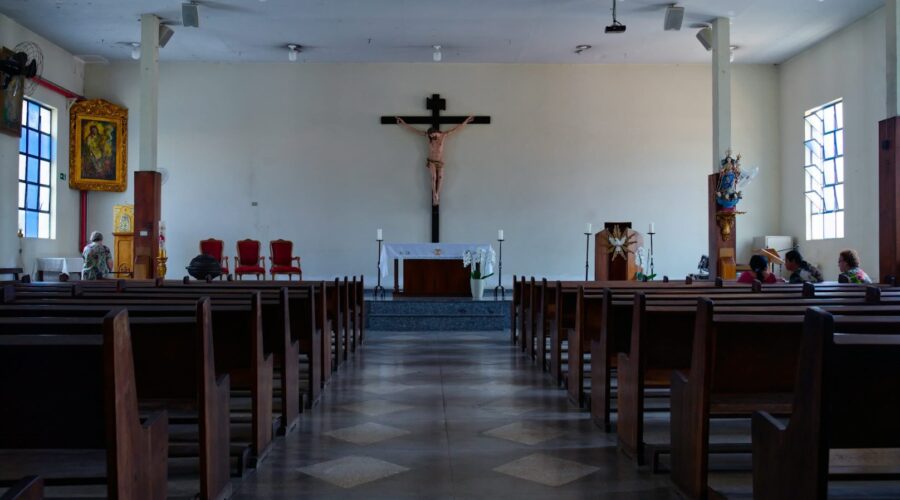
Unveiling the Greek Catholic Church: Beliefs, Practices, and History
Introduction
Enter the enigmatic realm of the Greek Catholic Church, a fascinating branch of Christianity that bridges the East and the West. With a profound history spanning centuries and a unique blend of Eastern and Western traditions, this church captivates the hearts and minds of millions worldwide.
Beliefs and Practices
Theology and Sacraments
Greek Catholics share fundamental Christian beliefs with other denominations, including the Trinity, the divinity of Jesus Christ, and the importance of grace. They also recognize the authority of the Pope but maintain their distinct liturgical and theological customs.
The seven sacraments hold significant importance: baptism, confirmation, Eucharist, penance, anointing of the sick, holy orders, and matrimony. The Eucharist, or Holy Communion, is central to worship and is celebrated using leavened bread and wine.
Liturgy and Tradition
Greek Catholic liturgy is steeped in rich Byzantine traditions. Divine Liturgy, their main service, features beautiful hymns, incense, and elaborate vestments. The iconostasis, a screen adorned with sacred images, separates the sanctuary from the nave.
Icons play a vital role in worship, representing the holy figures and connecting the faithful to the divine realm. Prayer beads, or komboskini, are also used for devotion.
History and Origins
Eastern Roots
The Greek Catholic Church traces its origins to the early Christian communities in the Eastern Roman Empire. Greek theologians such as Basil the Great, Gregory of Nazianzus, and John Chrysostom played influential roles in shaping its doctrines and practices.
Union with Rome
In the 16th century, a series of events known as the Union of Brest led to the formal union of certain Eastern Orthodox dioceses with the Catholic Church. These dioceses retained their Byzantine liturgy and customs but recognized the authority of the Pope.
Challenges and Resilience
Throughout its history, the Greek Catholic Church has faced persecution and assimilation pressures. In Soviet-controlled territories, many churches were closed or destroyed, and priests were imprisoned or killed.
Despite these challenges, the Greek Catholic Church has endured and continues to thrive in various parts of the world.
Global Presence and Culture
Diaspora and Mission
Greek Catholics have established vibrant communities in many countries, including the United States, Canada, Australia, and Western Europe. They have also played an active role in missionary work, planting churches in Africa, Asia, and South America.
Culture and Folklore
Greek Catholic culture is deeply entwined with Byzantine traditions and customs. Music, dance, and traditional crafts are integral parts of their heritage.
Folklore and legends play an important role in Greek Catholic identity. Saints and miraculous icons are highly venerated, and many local festivals and rituals have been passed down through generations.
Branches and Identity
Autonomous and Eastern Catholic Churches
Within the Greek Catholic Church, there are several autonomous churches, including the Ukrainian, Slovak, and Romanian Greek Catholic Churches. These churches have their own internal governance and some variations in liturgy.
Greek Catholics also belong to the broader family of Eastern Catholic Churches, a group of churches that share Eastern liturgical traditions but are in communion with the Catholic Church.
Conclusion
The Greek Catholic Church is a vibrant and multifaceted faith that has preserved ancient traditions while embracing the modern world. Its unique blend of Eastern and Western elements captivates the hearts of millions and continues to enrich the Christian landscape.
Whether you are a devout believer, a curious explorer, or simply seeking to deepen your understanding of the diversity of Christian traditions, the Greek Catholic Church invites you to delve into its rich tapestry of history, beliefs, and practices. May this exploration broaden your horizons and inspire you in your own spiritual journey.
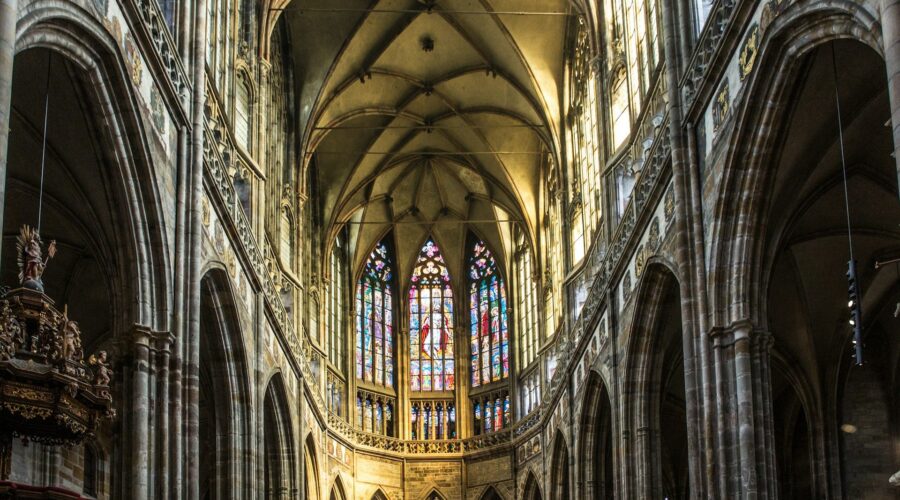
Discover the Warm Embrace of Good Shepherd Parish
Embark on a Journey of Faith and Community
Good Shepherd Parish is a vibrant and welcoming community where individuals of all ages and backgrounds can nurture their spiritual growth and forge lasting connections. As a beacon of hope and love, our parish offers a diverse array of ministries, programs, and events to inspire, uplift, and guide you on your faith journey.
Our Vision and Mission
Our vision is to be a beacon of God’s love and compassion, fostering a vibrant and welcoming community where all are embraced and encouraged to grow in their faith.
Our mission is to:
* Proclaim the Gospel message and provide opportunities for spiritual formation
* Nurture our members in their faith journey and foster a sense of belonging
* Reach out to the wider community through service and outreach programsMinistries and Programs
Good Shepherd Parish offers a comprehensive range of ministries and programs to cater to the diverse needs of our community:
- Adult Education Programs
- Bible Study Groups
- Children’s Liturgy of the Word
- Youth Ministry
- Prayer Groups
- Music Ministry
- Social Justice Outreach
- Community Meal Program
Events and Gatherings
Our parish calendar is filled with enriching events and gatherings that bring our community together:
* Weekly Mass and Sacraments
* Parish Festivals and Celebrations
* Retreats and Spiritual Exercises
* Community Service Days
* Family Movie Nights
* Seasonal CelebrationsOur Leadership Team
Good Shepherd Parish is led by a dedicated team of priests, deacons, and lay leaders:
*
Pastor
Rev. John Smith
*
Associate Pastor
Rev. Mary Jones
*
Deacons
- Deacon John Doe
- Deacon Jane Doe
*
Parish Council
A group of elected lay leaders who provide guidance and support to the pastor and staff
Contact Us
Join us at Good Shepherd Parish and experience the transformative power of faith and community.
* Address: 123 Main Street, Anytown, CA 12345
* Phone: (123) 456-7890
* Email: [email protected]
* Website: www.goodshepherdparish.orgTestimonials
“Good Shepherd Parish has been my spiritual home for many years. I have found a deep sense of belonging and purpose here.” – Sarah Johnson
“The ministries and programs at Good Shepherd Parish have played a vital role in my faith formation and growth.” – Mark Williams
Call to Action
We invite you to join our vibrant and welcoming community. Explore our ministries, attend our events, and discover the transformative power of faith at Good Shepherd Parish.
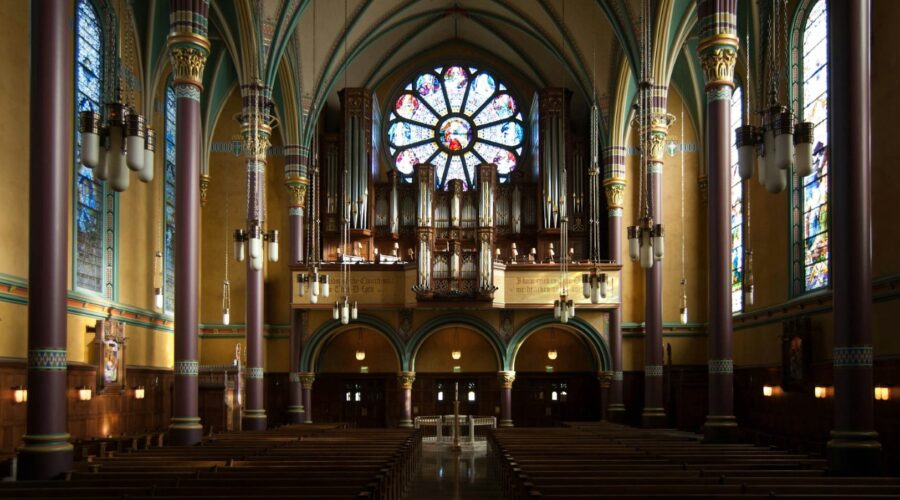
The Enigmatic God of Space: Exploring the Divine Realm Beyond
The vast expanse of space, an enigma that has captivated humanity for millennia, is often associated with a divine presence. From ancient mythologies to modern-day spiritual beliefs, the concept of a god of space has permeated human consciousness. In this comprehensive exploration, we delve into the enchanting realms of space and its enigmatic deity, revealing the profound significance and multifaceted nature of this celestial entity.
Ancient Deities of Space
Across different cultures and epochs, various deities have been revered as the rulers or guardians of space. These celestial beings have embodied the awe-inspiring power and boundless mystery that surround our cosmic home.
Anu (Sumerian)
In the ancient Mesopotamian pantheon, Anu was the supreme god of the heavens and the celestial realm. He was believed to reside in the highest heaven and was associated with the stars and celestial bodies.
Varuna (Vedic)
In the ancient Indian Vedic tradition, Varuna was the supreme god of the sky and the cosmic order. He was known as the upholder of the universe and the guardian of the stars and celestial paths.
Ouranos (Greek)
In Greek mythology, Ouranos was the primordial god of the heavens and the father of the Titans and Olympians. He personified the boundless expanse of the sky, symbolizing the divine realm beyond the reach of mortals.
Modern Interpretations
In contemporary spiritual and philosophical thought, the concept of a god of space has evolved, reflecting the advancements in our scientific understanding and our ever-deepening connection with the cosmos.
The Transcendent Void
Some modern spiritual traditions view space as a sacred void, a realm of pure consciousness and infinite potential. This transcendent void is often equated with the divine, seen as the source of all existence and the ultimate destination for the soul.
The Cosmic Dance
Other spiritual perspectives perceive space as a dynamic and ever-evolving cosmic dance. The interplay of celestial bodies, the birth and death of stars, and the expansion of the universe are seen as manifestations of a divine choreography, orchestrated by an enigmatic cosmic creator.
Science and Spirituality
While science and spirituality may seem like distinct realms, they can converge in their contemplation of space. The vastness and complexity of the universe have inspired scientific and spiritual awe alike, leading to a deeper appreciation of the interconnectedness of all things.
The Anthropic Principle
The anthropic principle suggests that the laws of physics and the properties of the universe are finely tuned to allow for the existence of life. This has led some to speculate that the universe itself may have been designed or created with a purpose.
Cosmic Consciousness
Certain scientific theories propose the possibility of a universal consciousness, a field of awareness that permeates the entire cosmos. This cosmic consciousness may be the divine presence that oversees and connects all that exists.
Finding the Divine in Space
Whether through ancient mythologies, modern spiritual beliefs, or scientific contemplation, the god of space remains an enigmatic and elusive figure. However, there are ways to connect with the divine presence within the vastness of space:
Stargazing
Gazing up at the night sky can evoke a profound sense of awe and wonder. By observing the stars and celestial bodies, we can feel a connection to the cosmic realms and the divine presence that may reside there.
Meditation
Meditation can help us transcend the limitations of our physical bodies and connect with the boundless expanse of space. By focusing on the vastness and interconnectedness of the universe, we can experience a sense of unity with the divine.
Cosmic Symbolism
Many cultures have developed intricate cosmic symbols to represent the divine and the celestial realms. Studying these symbols can provide insights into the nature of the god of space and its connection to humanity.
Conclusion
The god of space, an enigmatic and awe-inspiring entity, has captivated human imagination for centuries. Whether approached through ancient mythologies, modern spiritual perspectives, or scientific inquiry, the divine presence within the vastness of space continues to inspire wonder, reverence, and a deeper understanding of our place in the universe. As we continue to explore the cosmos, both physically and spiritually, may we always carry with us a sense of awe and gratitude for the divine spark that permeates the boundless realms of space.
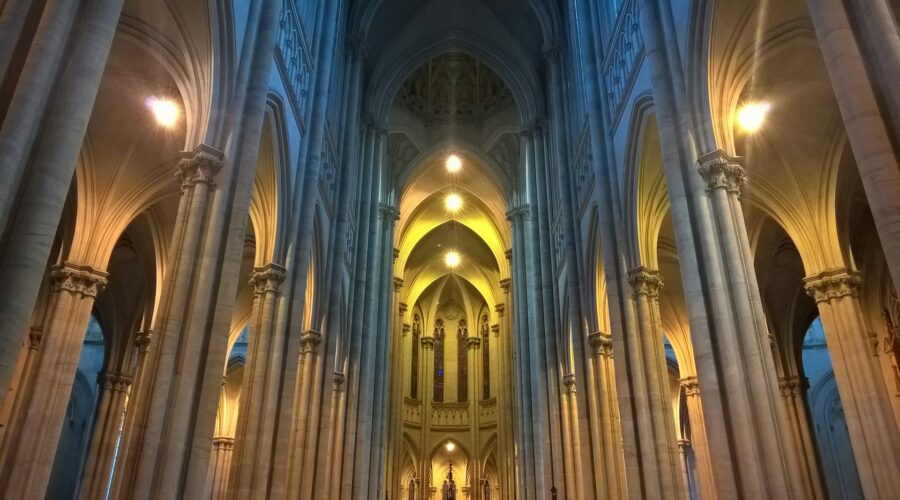
Discover the Serene Haven of Good Shepherd Convent: A Spiritual Oasis
About Good Shepherd Convent
Nestled amidst picturesque surroundings, the Good Shepherd Convent is a haven of tranquility and spirituality. Founded in [year of foundation], the convent has a rich history of providing a sanctuary for women seeking a life of devotion and service.
Mission and Values
The Good Shepherd Convent embodies the core values of:
- Compassion
- Justice
- Love
- Service
The sisters of the convent strive to live out these values through their prayers, work, and ministry.
Spiritual Life
Daily Routine
The sisters follow a daily routine that includes:
- Morning and evening prayer
- Daily Mass
- Spiritual reading
- Meditation
- Manual labor
Sacramental Life
The Eucharist is central to the spiritual life at the convent. The sisters receive Communion daily and participate in regular adoration.
Formation Programs
The convent offers formação programs for women interested in discerning a vocation to religious life. These programs provide an opportunity to experience the convent’s way of life and to grow in spiritual maturity.
Community Life
Sisterhood
The sisters of the Good Shepherd Convent form a close-knit community. They live, work, and pray together, supporting each other through their spiritual journeys.
Hospitality
The convent is known for its welcoming hospitality. Visitors are invited to share in the sisters’ prayers, meals, and conversations.
Social Outreach
The sisters are actively involved in social outreach programs that serve the poor and marginalized in the surrounding area.
Work of the Convent
The sisters of the Good Shepherd Convent engage in various ministries, including:
- Education
- Healthcare
- Social work
- Spiritual direction
Through these ministries, the sisters seek to spread the Gospel and meet the needs of those in society.
Becoming a Member
Discerning a Vocation
If you feel called to live out your faith in a community of dedicated women, we encourage you to explore a vocation to the Good Shepherd Convent. The discernment process typically involves:
- Inquiring about the convent
- Participating in formation programs
- Spending time with the sisters
- Seeking spiritual guidance
Admission Process
Once you have discerned a call to the Good Shepherd Convent, you will need to submit an application for admission. The admission process includes:
- Background check
- Medical examination
- Interviews with the vocations team
Contact Information
For more information about the Good Shepherd Convent, please contact:
Good Shepherd Convent
[Address]
[Contact Number]
[Email Address]Testimonials
“My time at the Good Shepherd Convent has been a transformative experience. I have grown in my faith and my understanding of myself and the world around me.” – Sister Mary
“The sisters have welcomed me into their community with open arms. I am grateful for the opportunity to live a life of service and spirituality.” – Sister Elizabeth
Additional Resources
Good Shepherd Convent Website
Good Shepherd Convent Facebook Page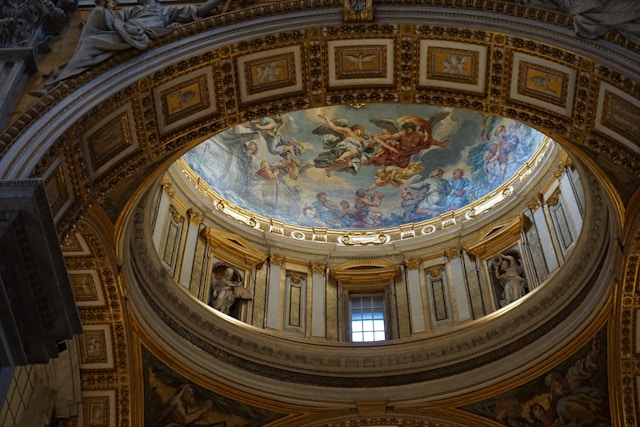
Unveiling the God of Abraham: A Comprehensive Guide
Who is the God of Abraham?
In the realm of Abrahamic religions, the God of Abraham holds a central and revered position. He is the patriarch of Judaism, Christianity, and Islam, and his story and covenant with Abraham are foundational to these faiths.
Divine Attributes:
- Monotheism: He is the sole and all-powerful deity.
- Omnipresence: He is present everywhere, at all times.
- Omniscience: He possesses infinite knowledge and wisdom.
- Omnipotence: He has unlimited power and authority.
- Transcendent: He is beyond human understanding or limitations.
- Immanent: He is also actively involved in the world and interacts with creation.
The Covenant with Abraham
The Call:
According to the biblical narrative, God first called Abram (later renamed Abraham) from the city of Ur in Mesopotamia. He instructed Abram to leave his homeland and embark on a journey to a new land, promising him descendants as numerous as the stars in the sky.
The Covenant:
In response to Abram’s faith, God established a covenant with him. This covenant included the following elements:
- Land: God promised to give Abram’s descendants the land of Canaan (later Israel).
- Descendants: God promised to multiply Abram’s descendants and make them a great nation.
- Blessing: God vowed to bless Abram and his descendants and to be their God.
The Test of Faith:
To test Abraham’s faith, God commanded him to sacrifice his beloved son, Isaac. Abraham’s willingness to obey demonstrated the depth of his devotion, and God spared Isaac.
Significance in Abrahamic Religions
Judaism:
In Judaism, the God of Abraham is known as Yahweh or YHVH, the Tetragrammaton. He is the God of the Torah, the covenant with Israel, and the Temple in Jerusalem.
Christianity:
Christians believe that Jesus Christ is the Messiah prophesied in the Old Testament. They view the God of Abraham as the Father of Jesus and the Trinity (Father, Son, and Holy Spirit).
Islam:
In Islam, the God of Abraham is known as Allah. He is the one and only God, and Muhammad is believed to be his final prophet. Muslims believe that Abraham is the father of both the Israelites and the Arabs.
Historical and Cultural Impact
The God of Abraham has had a profound impact on human history and culture:
Influence of the God of Abraham on History and Culture Aspect Impact Religious Beliefs: Shaped the beliefs and practices of billions of people worldwide. Social Norms: Influenced ethical values, moral codes, and laws in many societies. Art and Literature: Inspired countless works of art, literature, and music. Political Systems: Theocracy and the concept of divine right have roots in Abrahamic beliefs. Holidays and Festivals: Religious holidays like Passover, Christmas, and Eid al-Fitr commemorate events related to the God of Abraham. Conclusion
The God of Abraham is a complex and multifaceted figure who has had a profound impact on religion, culture, and history. His story and covenant with Abraham continue to shape the beliefs and lives of countless individuals worldwide. By understanding his divine attributes, the significance of the covenant, and his historical and cultural influence, we gain a deeper appreciation for the God who is at the heart of Abrahamic religions.
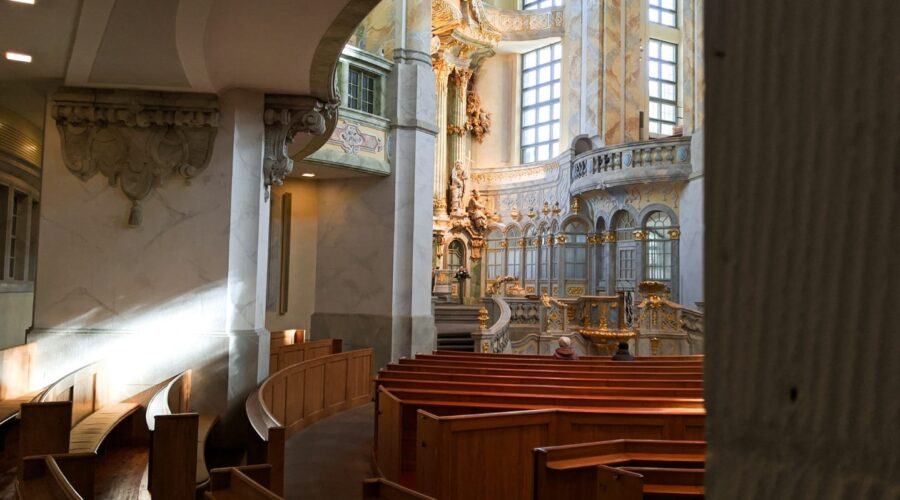
Gas Street Church: A Haven of Hope and History in the Heart of Birmingham
A Heritage of Faith and Community
Gas Street Church, nestled in the vibrant heart of Birmingham, England, stands as a testament to the enduring power of faith and the transformative nature of community. Its history, spanning over two centuries, is intertwined with the city’s own journey, mirroring its struggles and triumphs.
Founding and Early Years
Gas Street Church’s origins can be traced back to 1805, when a small group of devout Christians gathered in a private home for worship. Inspired by the Evangelical Revival, their fervor spread quickly, and in 1810, they established their own congregation, known as the New Jerusalem Chapel.
In 1826, the congregation acquired a site on Gas Street, where they erected their first purpose-built chapel. This unassuming brick building became the centerpiece of their spiritual life, serving as a refuge for the working-class community that surrounded it.
Growth and Expansion
As the city of Birmingham underwent industrial expansion, Gas Street Church grew alongside it. By 1889, the original chapel had become too small for the burgeoning congregation, leading to the construction of a grander edifice.
The new Gas Street Church, designed by renowned architect James Martin, was completed in 1892. Its opulent Gothic Revival style, complete with intricate stonework and stained-glass windows, reflected the growing prosperity of the city and the church’s own status as a spiritual force in the community.
Social and Cultural Impact
Besides its religious significance, Gas Street Church also played a vital role in the social and cultural life of Birmingham. It established schools, soup kitchens, and other social outreach programs, providing support and assistance to the city’s most vulnerable residents.
The church became a hub for education and culture, hosting lectures, concerts, and art exhibitions. It was a gathering place for social justice advocates and civic leaders, who worked together to improve the lives of all Birminghamians.
The 20th Century
The 20th century brought its share of challenges and changes to Gas Street Church. During the Second World War, the building was badly damaged by enemy bombing, but the congregation remained resolute, rebuilding and restoring their beloved sanctuary.
In the post-war era, the church continued to adapt to the evolving needs of the city. It established a community center, offering a wide range of services to meet the needs of all ages and backgrounds.
In 1984, Gas Street Church was designated a Grade II* listed building, acknowledging its architectural and historical importance. This recognition ensured its protection as a heritage site for future generations.
Gas Street Church Today
Today, Gas Street Church remains a vibrant and welcoming congregation, deeply rooted in the community. It offers a wide range of services, including traditional and contemporary worship, Bible study, and community outreach programs.
The church is also home to a number of organizations, including the Gas Street Music School, which provides music education to over 400 students, and the Gas Street Youth Club, which offers a safe and supportive environment for young people.
Architecture and Design
Gas Street Church is renowned for its stunning Gothic Revival architecture. The building features:
- An elaborate stone façade adorned with intricate carvings and sculptures
- Soaring stained-glass windows that depict scenes from the Bible
- A vaulted ceiling supported by graceful arches
- A spacious nave that can accommodate over 1,000 worshippers
Visiting Gas Street Church
Gas Street Church is open to visitors most days of the week. Guided tours are available upon request, offering an opportunity to delve deeper into the history and significance of this magnificent building.
The church is easily accessible by public transportation or on foot. It is located in the heart of Birmingham’s historic Jewellery Quarter, surrounded by museums, shops, and restaurants.
Conclusion
Gas Street Church is a testament to the enduring power of faith and the transformative nature of community. Its journey over two centuries mirrors the history of Birmingham itself, reflecting the city’s resilience, innovation, and unwavering spirit.
Today, Gas Street Church stands as a beacon of hope and a symbol of unity in the heart of a thriving metropolis. It is a place where people come together to worship, learn, and connect with one another, creating a vibrant and inclusive community for all.
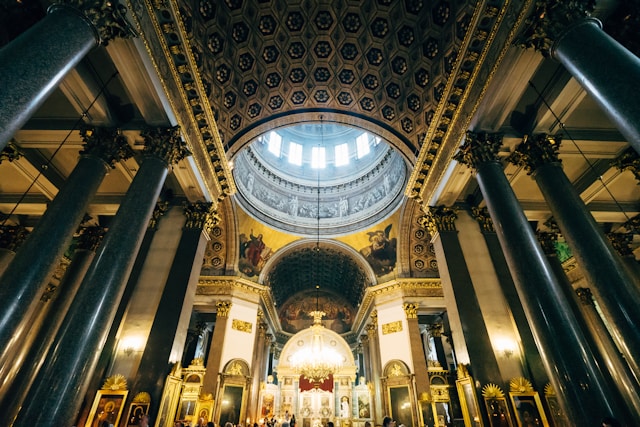
Discover the Meaning and Benefits of Attending Church
“`html
Understanding Church Attendance
Attending church is a religious practice that involves participating in a community of believers for worship, fellowship, and spiritual growth. It is an integral part of many religions, including Christianity, Judaism, Islam, and Hinduism.
Church attendance can be a meaningful experience that offers numerous benefits, including:
- Spiritual Development: Worship and prayer foster a connection with the divine and promote spiritual growth.
- Community Building: Church provides a sense of belonging and connection with others who share similar beliefs and values.
- Moral Guidance: Religious teachings offer ethical principles and guidance for daily living.
- Support and Encouragement: Church members can provide emotional, social, and spiritual support to one another.
- Service and Outreach: Many churches engage in outreach programs that serve the community and promote social justice.
Benefits of Regular Church Attendance
Regular attendance at church has been linked to various positive outcomes, such as:
- Higher levels of happiness and well-being
- Improved mental and physical health
- Stronger relationships
- Increased social support
- Reduced risk of addiction and substance abuse
Choosing a Church
Finding a church that aligns with your beliefs and values is essential for a meaningful experience. Consider the following factors when choosing a church:
- Beliefs and Teachings: Ensure that the church’s teachings align with your own spiritual beliefs.
- Worship Style: Consider the type of worship service that you find engaging and meaningful.
- Community: Visit different churches to get a sense of the community and whether you feel welcomed and connected.
- Leadership: Get to know the pastor or other leaders to understand their vision and leadership style.
- Opportunities for Involvement: Explore the opportunities for serving and participating in church activities.
Tips for Attending Church
To make your church attendance a rewarding experience, follow these tips:
- Be Intentional: Attend church with a purpose, not just because it’s a routine.
- Participate Actively: Engage in worship, listen attentively to sermons, and connect with others.
- Connect with Others: Make an effort to introduce yourself and build relationships with fellow church members.
- Serve and Give Back: Find ways to contribute your time, talents, and resources to the church community.
- Seek Spiritual Growth: Take advantage of opportunities for Bible study, prayer groups, and personal reflection.
Conclusion
Attending church can be a transformative and enriching experience. By choosing a church that aligns with your beliefs, participating actively, and seeking spiritual growth, you can reap the numerous benefits that church attendance offers. Remember that church is not just a building but a community of believers who gather to worship, connect, and serve.
“`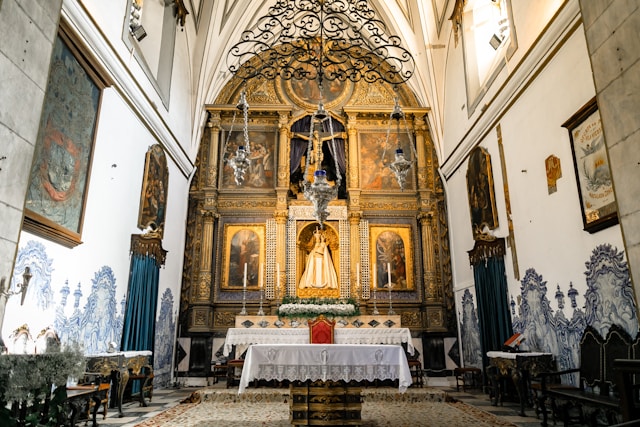
Unveiling the History, Significance, and Architectural Splendor of Fatima Church
Embark on a captivating journey through the annals of Fatima Church, a hallowed sanctuary that stands as a testament to faith, architectural prowess, and enduring spiritual significance. In this comprehensive guide, we delve into the rich tapestry of this remarkable edifice, exploring its historical roots, architectural marvels, and the profound impact it has had on countless lives.
A Journey through Time: The Historical Roots of Fatima Church
The Apparition of Our Lady of Fatima
The story of Fatima Church is inextricably intertwined with the pivotal events that unfolded in the humble village of Fatima, Portugal, in 1917. It was during this time that three young shepherds, Lucia dos Santos and her cousins Francisco and Jacinta Marto, witnessed a series of apparitions of the Virgin Mary.
The apparitions, which spanned several months, captivated the attention of the world and drew immense crowds of pilgrims to Fatima. The messages conveyed by Our Lady during these apparitions centered on prayer, penance, and the need for global peace.
Building the Sanctuary of Fatima
Inspired by the apparitions and the profound impact they had, the construction of a sanctuary in Fatima commenced in 1919. The initial chapel, known as the Little Chapel of the Apparitions, was built on the exact spot where the children had witnessed the Virgin Mary. Over the years, the sanctuary grew and expanded, culminating in the majestic Fatima Church that stands today.
Architectural Masterpiece: Deciphering the Splendor of Fatima Church
The Neo-Baroque Facade
As you approach Fatima Church, its grandiose Neo-Baroque facade commands attention. Defined by intricate carvings, towering columns, and an elaborate pediment, the facade exudes an aura of opulence and grandeur.
The Central Nave and Altar
Step inside the church and you will be awestruck by the soaring central nave. The space is punctuated by elegant arches, adorned with intricate frescoes and adorned by stained-glass windows that bathe the interior in a symphony of colors.
The central altar, a masterpiece in itself, is a focal point of the church. Crafted from precious marble and adorned with gold leaf, the altar serves as the centerpiece for liturgical celebrations.
The Capelinha das Aparições
A revered sanctuary within the church is the Capelinha das Aparições (Chapel of the Apparitions). This intimate space marks the precise spot where the children encountered Our Lady. The chapel houses a statue of Our Lady of Fatima, which is believed to be miraculous.
The Spiritual Significance of Fatima Church
A Place of Pilgrimage
Fatima Church has become a renowned destination for pilgrims from around the world. Every year, millions of people flock to the sanctuary to seek spiritual renewal, pray for miracles, and experience the presence of Our Lady.
Messages of Peace and Hope
The messages conveyed by Our Lady of Fatima continue to resonate with people today. Her call for prayer, penance, and peace has inspired countless individuals to live lives of faith and compassion.
A Source of Inspiration
Fatima Church serves as a constant reminder of the power of faith and the transformative nature of divine grace. It is a place where countless lives have been touched, and where hope and healing continue to be found.
Tips for Visiting Fatima Church
* Plan your visit in advance, especially if you are traveling during peak season.
* Consider attending a religious service to fully immerse yourself in the spiritual atmosphere.
* Take some time to wander around the extensive sanctuary grounds.
* Visit the Fatima Museum to learn more about the history and significance of the apparitions.
* Respect the sacred nature of the site and maintain silence in designated areas.Conclusion
Fatima Church stands as a beacon of faith, a testament to the enduring power of divine grace. Its historical significance, architectural splendor, and profound spiritual impact have made it a cherished destination for pilgrims and seekers alike. As you delve into the rich tapestry of Fatima Church, may you find inspiration, peace, and a renewed sense of hope.
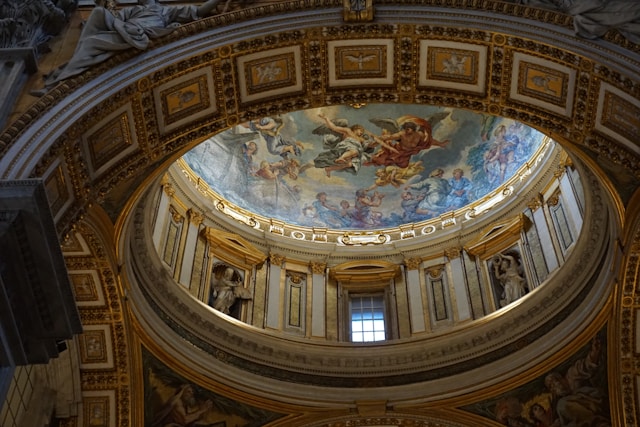
Extra Ecclesiam Nulla Salus: Exploring the Doctrine of Salvation Outside the Church
Introduction
The phrase “extra ecclesiam nulla salus” (literally “outside the Church, no salvation”) encapsulates a central tenet of Catholicism that has sparked theological debate for centuries. This doctrine holds that salvation can only be attained through membership in the Catholic Church. While it has been interpreted and reinterpreted throughout history, the principle remains a foundational belief for the Church.
Historical Context
The origins of “extra ecclesiam nulla salus” can be traced back to the early Church Fathers, such as Irenaeus and Tertullian. They argued that the Church was the sole repository of divine truth and that only those within its fold could receive the grace necessary for salvation. This concept was later formalized by Pope Innocent III at the Fourth Lateran Council in 1215.
Interpretations and Implications
Over the centuries, various interpretations of “extra ecclesiam nulla salus” have emerged.
- Strict Interpretation: This view holds that salvation is absolutely impossible for those outside the Catholic Church. It implies that non-Catholics are eternally condemned.
- Moderate Interpretation: This interpretation allows for the possibility of salvation outside the Church in exceptional circumstances. It suggests that God’s mercy may extend to those who are unaware of the Church or who are genuinely seeking truth.
- Ecumenical Understanding: The ecumenical movement has led to a broader understanding of salvation. While the Catholic Church still maintains that the fullness of salvation is found within its boundaries, it acknowledges the presence of Christian elements in other denominations.
Exceptions and Clarifications
Despite the general principle of “extra ecclesiam nulla salus,” there are certain exceptions and clarifications worth noting:
- Baptism of Desire: The Church recognizes that those who desire baptism but are unable to receive it due to circumstances beyond their control may still be saved.
- Invincible Ignorance: Those who are genuinely unaware of the Catholic Church or its teachings may still be granted salvation.
- Other Faiths: While the Catholic Church maintains the primacy of its own faith, it believes that elements of truth and salvation can be found in other religions.
Implications for Ecumenism and Interfaith Dialogue
The doctrine of “extra ecclesiam nulla salus” has significant implications for ecumenism and interfaith dialogue.
- Ecumenism: The Church’s position on salvation outside the Church can present challenges to ecumenical efforts. However, continued dialogue and understanding are essential for fostering unity among Christians.
- Interfaith Dialogue: The Church’s recognition of other faiths’ elements of truth and salvation can serve as a starting point for respectful interfaith dialogue and collaboration.
Conclusion
The doctrine of “extra ecclesiam nulla salus” continues to shape Catholic theology and interreligious dialogue. While it affirms the importance of the Church as the primary means of salvation, it also acknowledges exceptions and the possibility of salvation outside its boundaries. Understanding the historical context, interpretations, and implications of this doctrine is crucial for ongoing discussion and the pursuit of Christian unity.
Additional Resources